Exploring the Vocal Skills of Pet Birds: A Comprehensive Guide
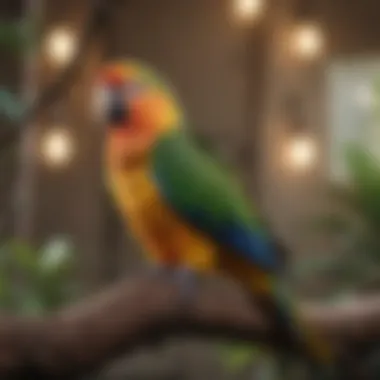
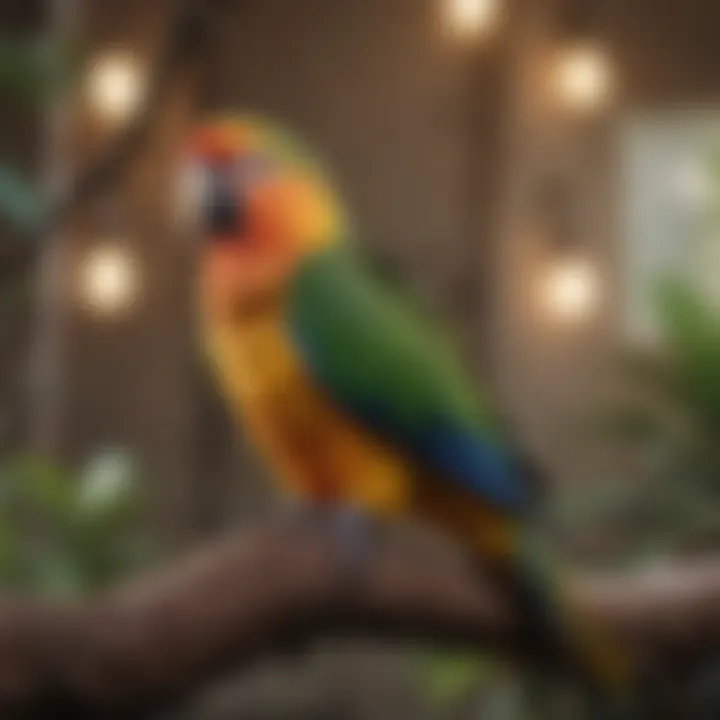
Intro
The vocalization abilities of pet birds are a fascinating subject that intertwines the realms of science and pet ownership. Understanding how these avians communicate can elevate the experience for both the pets and their owners. Knowing which species can
Intro to Avian Communication
Understanding avian communication is critical for anyone involved with pet birds. Pet owners can benefit immensely by learning about how these animals convey their needs and emotions. This knowledge will improve the relationship between the owner and their feathered companions.
Bird vocalization is not just mere noise; every sound holds significance and emotion. When we pay attention to these sounds, we begin to grasp the richness of bird language. Such understanding fosters empathy and helps develop a more meaningful bond. Recognizing these subtleties makes it easier to ensure that birds have a fulfilling existence.
The auditory world of birds varies significantly among species, and this is where we start to delve deeper. Through understanding how different species vocalize, owners can better cater to their needs. Specific species are renowned for their vocal capabilities, often displaying unique social structures that hinge on communication. Such insights not only enhance daily interactions but encourage a stimulating environment conducive to more vocalization and engagement.
Ultimately, a profound insight into avian communication serves as the basis for a more enriching environment. Creating that connection involves using effective training techniques and understanding the diverse sounds. Promoting vocalization enriches the life of both the pet and the owner.
Overview of Bird Vocalization
Bird vocalization encompasses a variety of sounds used for different functions. Many people assume that chirps and songs are the primary forms of bird communication. However, the range of vocalizations is astounding. Birds can whistle, mimic, and even produce complex sequences of sounds. These varying types of sounds play crucial roles in social interactions.
Common vocalizations include:
- Songs: Often used by male birds to establish mating territory and attract females. The style and complexity vary widely by species.
- Calls: These are shorter and typically convey warnings. For instance, a sudden alarm from a flock member will alert others to lurking predators.
- Mimicry: A fascinating trait found among some bird species, enabling them to imitate human voices or artificial sounds.
Understanding these basic categories lays the groundwork for exploring the specific vocal abilities of different birds, particularly domesticated ones.
Purpose of Communication for Birds
The primary purpose of communication in birds is closely related to their survival and social structure. Effective vocalization allows birds to navigate their environment and connect with others in their community.
Key purposes include:
- ** mate attraction** and territorial defense
- ** Warning calls** signaling danger to others in their flock
- ** Coordinating behaviors** within social groups, enhancing group dynamics
Bird communication goes beyond simple identification of danger.
For example, Alarm calls vary greatly based on the threat; a different sound can signal a predator in the air versus one on the ground. Birds can convey physical states or structural details of risks through tonal variations.
Overall, avian vocalizations create a vivid tapestry of interaction that is vital to daily survival as well as social bonding.
Species Known for Talking
The vocal capabilities of pet birds have become a point of interest for many avian enthusiasts. Understanding which species are known for their talking abilities allows bird owners to make informed choices prior to acquisition. The experience of owning a talking bird is unique, as it can substantially enrich the bond between pet and owner. Certain species are naturally more inclined to mimic sounds, leading to enhanced interaction and communication.
Parrots
Most Popular Talking Parrots
Parrots are often regarded as the stars in the world of talking birds. Among them, African Grey, Amazon, and Indian Ringnecks are recognized for their exceptional talking abilities. For a potential bird owner, having a talkative parrot is a significant draw. The charm of hearing a parrot articulate words and phrases can heighten the engagement experience. African Grey Carrots, for example, are not just good at mimicking sounds, they also show emotional intelligence by adapting their speech based on social context.
The unique feature that sets most parrots apart is their ability to understand and mimic tones consistently. Their vocal cords have developed more flexibility, providing them a richer sound range. However, it is essential to recognize that not all parrot species can talk fluently, so a wise selection is advised.
Unique Vocal Traits
Unique vocal traits vary among parrot species but commonly include both clear speech and varied sounds. African Grey parrots are known for their broad vocabulary, while Budgerigars can often produce a variety of whistles linked to their mood. This diversity enhances the overall topic of avian communication, showcasing how species-specific sound abilities can create a more relational experience.
Yet, the usage of these patterns can prove challenging; it greatly depend on the environment and the engagement of the owner. A parrot exposed to a nurturing and interactive setting is likely to express its vocal potential. Bear in mind that overemphasizing on species known for posting vocal skills may overshadow others with lesser-known but equally delightful traits.
Budgerigars
Understanding Budgie Speech
Budgerigars, colloquially called budgies, also excel in vocal abilities but in different ways. Their speech typically forms from short phrases or chirps. Recognizing and interpreting these can greatly enhance the interactive aspect between birds and owners. A unique element of budgie speech is their short learning curve; some can acquire over a hundred words with relatively effortless repetition.
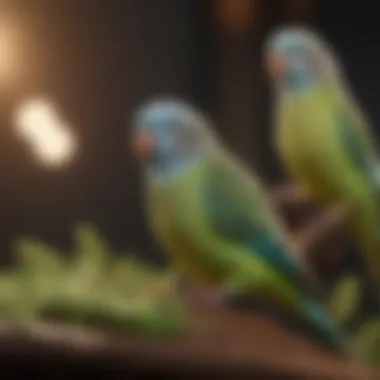
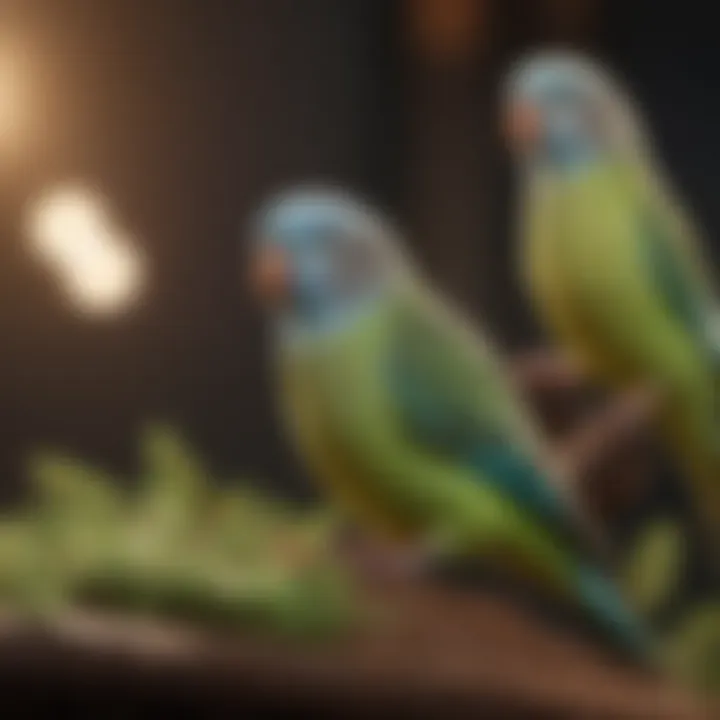
On the downside, making them too reliant on simple phrases may frustrate both budgie and owner, who expects complex interactions eventually. Therefore, an insightful approach captures budgies' specific sound patterns as a personal language developed during owner interactions.
Vocabulary Development
Budgies develop their vocabulary distinctly through repetition and social cues. Capturing timely interactions can cultivate a satisfying dialogic approach. Key traits include sound keeness and engagement level during speech training. Utilizing both visual social cues like gestures and verbal inclinations enriches their speech potential.
This word development is characterized by consistent reinforcement. However, some limitations exist, as certain noise levels can inhibit learning. Creating a quiet space ensures clarity and focus during training sessions, maintaining an effort to restrain comapre and contrast with quieter species.
Cockatiels
Whistling Versus Talking
Cockatiels present an interesting discussion on communication styles, especially between whistling and talking. Cockatiels are known for their whistles. Often, some owners prefer the cheerful melodies over mimicking words. Understanding these preferences helps encapsulate their distinct charactertistic of vocal style preference in a bird species practical choice.
For some, this accounts for contributing to distress in expecting chatter where simple melodies dominate communication practice. While charming, note the limitations when golden sights are set on conversational behavior depending on the time and context of exposure to talking-related scenarios.
Training Methods
Training cockatiels involves patience and positive encouragement. Positive reinforcement plays a vital role in classic conditioning that leads strain-based frustrations for bird owners. While whistling is unique, guiding focus in speech patterns requires design resources to stimulate natural learning initiatives within the aviary system. Proper methodologies are necessary, including step-by-step guidelines to ensure effective language engagements can happen over time. The advantage punctuates this connection for long-term talking evolvement, suggesting setting a structured interaction schedule is optimal while communicating with acceptism culturally informing their potentials.
African Grey Parrots
Intelligence and Communication
Among avian species, African Grey Parrots stand out particularly for their cognitive abilities coupled with communication skills. Researchers have documented their insightful articulations asserting behavioral adjustments based on human interactions rather than purely mimicking words.
This particularly interdisciplinary subject enhances the overall significance of domestic bird companionship and poses critical thoughts for scientists on comparative psychology.Display incomeplimentation, as emotional, ties inter-fixed-enviro space, feeding household relational attributes naturally adds supports observingouches as largely prefer this kind of hand-zchair spectrum compliments.
The Science Behind Bird Vocalization
Understanding the science behind bird vocalization enhances the appreciation of the communication skills in pet birds. The mechanics of how birds produce sounds provides insight into their vocal capabilities. Several scientific disciplines, including anatomy and neurology, interact in creating an avian's unique voice.
Anatomy of a Bird's Vocal System
Birds do not have vocal cords like mammals. Instead, they create sounds using a specialized structure called the syrinx. This organ is located at the junction of the trachea and bronchi. The syrinx acts like a dual reed instrument, where muscle control allows for modulating pitch, tone, and volume. Key components include:
- Bronchi: These are air pipes that deliver air to the syrinx. The amount and airflow determine sound quality.
- Labia: These membranes control airflow during vocalizations. Their tension and thickness can adjust the tone.
- Muscles: A set of intrinsic and extrinsic muscles surrounding the syrinx help shape the sound.
This anatomical arrangement allows birds to produce a surprisingly wide range of sounds, from simple tweets to complex mimicry.
Neurology of Communication
Communication through sound is managed by intricate neural pathways in a bird's brain. Many bird species have specific areas in their brain devoted to vocalization and song learning. For instance, parts akin to the mammalian cortex manage complex vocalizations, while the song system in the forebrain is involved in learning inspired by listening to other birds.
Crucial aspects include:
- Hearing: Birds rely on auditory feedback to refine their vocal skills. Listening helps them improve their repertoire.
- Social Brain Areas: Regions in the brain support not just the ability to generate sounds but also to process social information and context.
- Plastcity: The neiral pathways are flexible, allowing birds to adapt their sounds over time, especially in changing social environments.
Understanding these neural mechanisms is fundamental in appreciating how certain birds become exceptionally proficient at mimicking human speech and other sounds. It sheds light on their learning processes influenced by factors such as environment and social interactions.
Encouraging Talking in Pet Birds
Encouraging your pet bird to talk can significantly enhance both communication and the bond between you and your avian companion. Birds, especially those known for their vocal prowess like parrots, respond positively to environments that stimulate their natural instincts. Engaging them in activities that mirror their social structures in the wild fosters not only vocalization but also overall well-being.
In this section, we focus on creating enriching environments for birds, which include their habitat, interaction with owners, and introducing mental and physical challenges. The resulting benefits include improved vocalization, less loneliness for the bird, and a happier, healthier state of being.
Creating a Stimulating Environment
A stimulating environment goes beyond toys and perches. Birds thrive when they are given new experiences, which should be integrated regularly into their lives. Consider enriching their habitat with interactive toys, climbing structures, and sunlight. Shadows run clearly through simple activities that engage their instincts.
Changing their environment occasionally can help, too. Moving their cage to different areas can help them find new sounds and sights they may want to mimic. Ensure social interactions are encouraged during these changes, as birds are inherently social creatures.
Effective Training Techniques
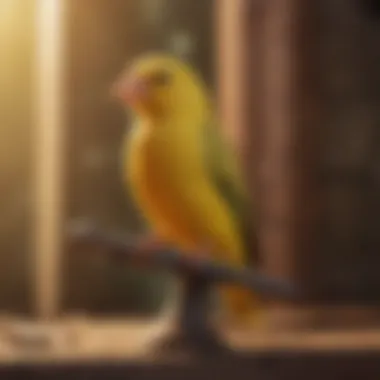
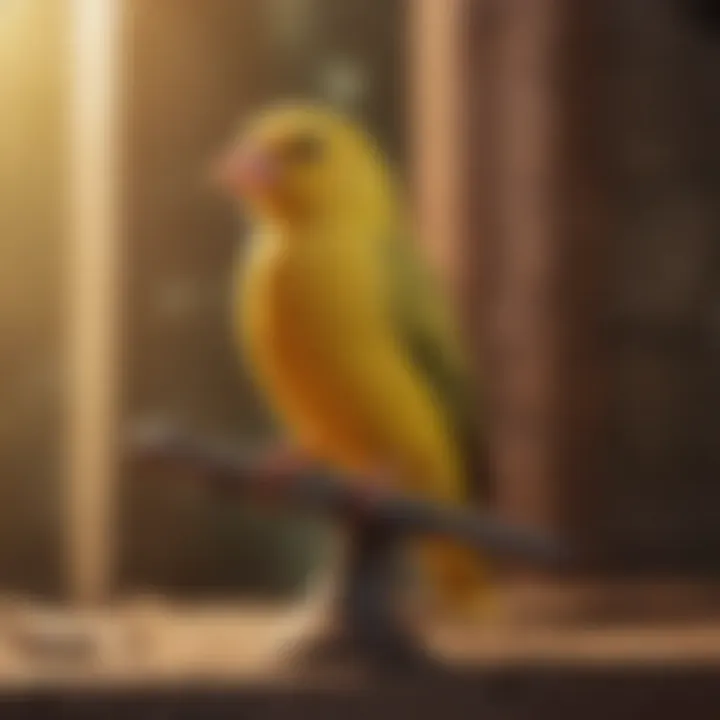
Reinforcement Strategies
Reinforcement strategies play a pivotal role in encouraging talking in birds. This involves rewarding your feathered friend when they vocalize or mimic sounds. Using treats, positive verbal feedback, and attention as rewards helps birds associate talking with pleasurable experiences. A key characteristic of reinforcement strategies is their simplicity, requiring just consistency and patience. This method cultivates an engaging bond between pet and owner as rather than being an isolated task.
An advantage of this strategy is using natural behaviors, understanding that exotic sounds can mimic emotions or states, guiding your approach effectively. While generally effective, it requires commitment. If the pet is overloaded with stimuli, attention span may not be effective, pausing can help.
Daily Practice Routines
Establishing a daily practice routine contributes significantly to encouraging vocalization. Setting aside dedicated times each day to interact with your bird enhances its ability to learn. This consistency places it within the realm of familiarity, as birds respond well to predictable cycles. Practice vocals through engagement and repetition fosters reinforcement of learned phrases.
Watching your bird learn phrases can be rewarding and that reinforces your own engagement. A primary feature of classic daily practices is dedicating, structured time shows the bird that vocalization is important. However, time investment can occasionally counterproductive if a constant verbal bombardment over the intended exchange leads to overexposure, perhaps stepping back occasionally could remedy fatigue.
A well-rounded approach that integrates creation of stimulating environments alongside effective training techniques may lead to enriched communication, enabling a rewarding relationship between bird and owner.
Understanding Vocal Behavior
Understanding vocal behavior in pet birds provides critical insights into how these animals communicate and interact with each other and their environment. Multiple factors influence their vocal patterns, shaping their development as well as their relationship with human companions. Knowledge of vocal behavior can improve communication skills in birds, foster a healthy interaction, and contribute to the bond between pet and owner.
Contextual Communication
Social Interactions
Birds in social environments display diverse vocal traits. Social interactions often play a role in vocalization, such as greeting calls or alarms. Key characteristics of these interactions include their potential to establish hierarchy among birds and strengthen social bonds. A pet bird resembling wild counterparts may further enhance its societal connections through vocal expression. Using vocalizations to engage can lead to rewarding interactions, where you respond to your bird's calls. Birds might treat their environment as a collective space. They respond to companions, be it humans or other birds, adapting their behavior.
The benefit of social interaction is clear. Encouraging communication enhances mental cruise and can reduce loneliness for both the bird and pet owner. While nurturing vocal habits through lenses of social interaction may bolster their talking skills, excessive attention and stimulation can also cause anxiety or stress in certain situations. Maintaining a balance is vital. Challenging birds without overwhelming them helps cultivate confidence in vocal behavior, positively influencing their communicative abilities.
Environmental Influences
The claim that the environment shapes vocalization also holds significant truth. Birds constantly adapt their communication in response to their surroundings. Unique sounds from different locales can influence a bird's repertoire, with birds resemblings their learned environments. Environmental factors might be natural, like the presence of a family or humans, plus subtler influences such as room acoustics.
A notable characteristic of environmental influence is its versatility. Birds can learn from various stimulus in their atmospheric context, and attention to present circumstances often shapes successful vocal patterns. This adaptability is beneficial as it shifts a bird's capacity to thrive в estranged environments, whether they are living among other pets or just alone in a cozy room.
While environmental stimuli generally provoke auditory learning, excessive noise can interfere with sound recognition, leading to stress in some instances. Thus, owners should introduce their birds to controlled stimuli while monitoring reactions to strike a balance. Creating designated safe zones, areas quiet enough for vocal practice without disturbances, encourages an approach tailored to their unique needs.
Identifying Sounds and Their Meanings
It is essential for bird owners to identify the various sounds pets make. Specific noise may signal mood, stress levels, or other behaviors. Asking important questions such as what sound means happy or frightened conveys value when interpreting avian needs. Each unique chirp, whistle, or squawk carries significance.) Incorporating familiarity inspires owners to always connect on a deeper level with these animals.
Broader understanding fosters inter-dependence, emerged emotional bonds, and harnesses both the hability to understanding one's bird. Interpreting these signals often enhances the confirmed effectiveness at overall life experience and creates a supportive environment with the vocalized speech between human and feathered friend.
The intricate vocalizations in pet birds encapsulate more than mere sounds; they represent their emotions, well-being, and social interaction outcomes. Enhancing avian comprehension translates benefits dynamic health growth in relationships and enables caring environments.
Common Misconceptions about Talking Birds
Understanding the common misconceptions about talking birds is essential for pet bird owners and enthusiasts. These myths can lead to unrealistic expectations, affecting how individuals interact with their feathered companions. By clarifying these misunderstandings, owners can create an environment that truly supports the unique vocal characteristics and needs of their birds. This section addresses two prevalent myths that often mislead potential or current bird owners.
Myth: All Birds Can Talk
It is widespread to assume that all bird species possess the ability to talk or mimic human speech. In reality, only a select few species have that capability. Birds belong to diverse families, each having distinctive characteristics and vocalizations. While many birds communicate through whistles, songs, and calls, these are not the same as true talking.
Only certain types of birds, like parrots, mynah birds, and some ** chorus or omnivENDERS*, show remarkable abilities to learn human language.* The reason lies in their vocal structure. The syrinx, a bird's vocal organ, is influenced by species-specific adaptations, which govern the variety and complexity of sounds an individual can produce.
Implication for Owners
For owners who expect all species to imitate human speech, disappointment follows quickly. It is crucial first to understand that behavior is not universally applicable.
- Not every bird will talk, and it’s important to consider species capabilities.
- Engaging those species better suited for talking will lead to a more enriching experience.
Myth: Talking is the Only Form of Communication
Another common misconception is that talking represents the only or primary form of communication among birds. The reality is far richer, encompassing a myriad of sounds that convey a spectrum of meanings far beyond just mimicking human language.
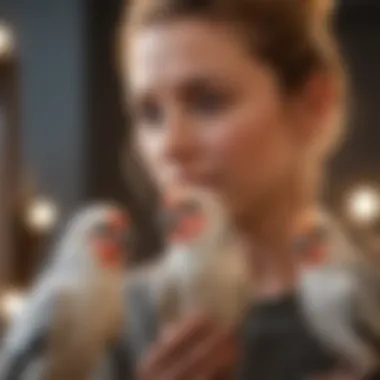
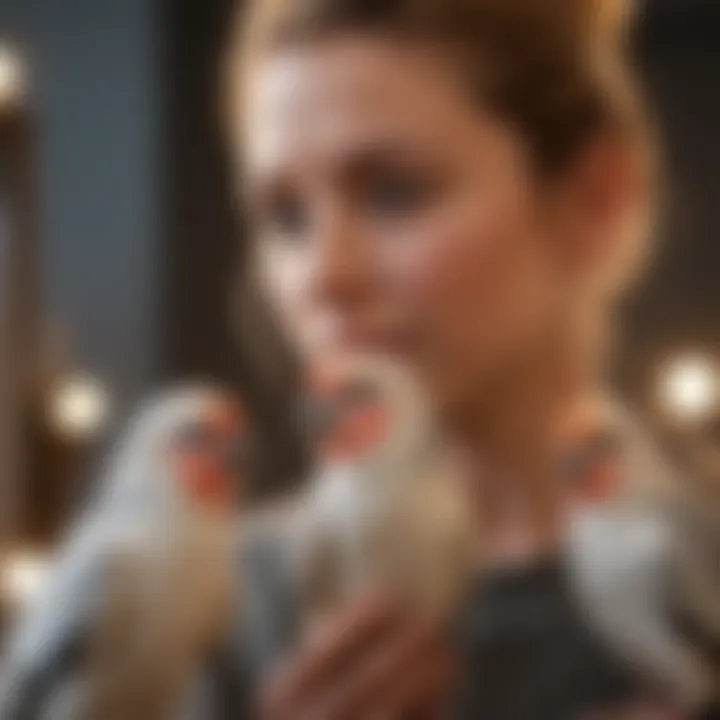
Birds communicate through various vocalizations, including chirps, squawks, trills, and even silence. Each sound tenders unique implications, tailored to the situation at hand.
- Birds utilize vocal sounds for specific purposes:
- Alerting: It can help signal distress or danger.
- Courtship: Whistles and songs help attract partners.
- Social interaction: Non-verbal sounds foster social bonds within their flock.
Effective bird communication extends far beyond one or two types of vocal expressions. It shapes their societal dynamics and reflects their emotional states, needs, or surroundings.
It’s vital to understand that effective communication involves not only vocalization but also body language and behavior.
By valuing the full context of avian communication, bird owners can enhance the interactions with pet birds. Capturing the nuances promotes enriched experiences for both parties.
The Role of Socialization in Vocalization
Socialization plays a crucial role in how pet birds express vocalization. While many pet bird owners recognize vocal skills, they may not fully grasp that the social environment is a major factor behind a bird’s capacity and desire to communicate. Birds, like many other animals, often thrive in environments where interaction is frequent and meaningful.
Importance of Social Interaction
Social interaction is essential for a bird's vocal development. Birds born in isolation or without any contact to other birds often demonstrate limited vocal capabilities. Contrary to one might think, it isn't enough for birds to simply hear sounds. Interaction stimulates their natural instincts for rapport and dialogue. For instance, birds engage in
Assessing a Bird's Talking Ability
The process of assessing a bird's talking ability requires attentive observation and a grasp of key elements that contribute to vocalization. First and foremost, each species possess variations in vocal capabilities and learning rates. Noticing discrepancies across species is crucial in adjusting training methods accordingly. Consider how some breeds like African Grey Parrots shine in mimicry while others may replicate sounds less frequently or with lower fidelity.
In addition, creating a specific environment free from distractions can enable clearer evaluations. Regular testing while considering both physical health and emotional well-being of the bird is necessary. Include diverse stimuli like songs, conversations, and toys designed to encourage vocalization.
Identifying Potential Talkers
Identifying potential talkers among pet birds requires keen observation and consideration of several markers. Factors like age, breed, and individual personality indicate if a bird is predisposed to verbal communication. For example, young, social, and engaging species like Indian Ringnecks and Quakers are typically easier to train compared to others.
When approaching any potential talking bird, look for behavioral cues:
- Social Behavior: Birds displaying confidence and curiosity tend to explore vocal exercises more vigorously.
- Interest: Assess your bird's reaction to sounds both human and non-human. An excited response can signal willingness to mimic.
- Vocalization Patterns: Pay attention to the types of sounds being made, as these may indicate developing vocal skills.
Starting with basic phrases children use may elicit beneficial responses. Interest in tribal sounds can become a full-fledged talking capability with consistency.
Factors Influencing Vocal Development
Many factors influence a bird's vocal development, shaping its ability to talk over time. Potential factors range from genetic predisposition to cage environment and even one's interaction levels. A careful approach educates bird owners about how to harness and enhance vocal skills effectively.
- Breed and Genetics: Certain breeds inherently possess superior vocal skills. Parrots like Amazon and Eclectus lead the pack regarding verbal mimicry potential, while other birds may have a significantly limited ability in this domain.
- Social Environment: Interacting regularly contributes to better vocal growth. Provide daily sessions of exposure to sound management to develop thought process surrounding communication accuracy.
- Training Approaches: Reinforcement is crucial. Utilize methods focusing on positive incentives to encourage repeated vocal practice.
- Health Status: Physical wellness influences a bird's desire to vocalize. Regular wellness checks ensure the bird remains in prime shape, minimizing obstacles to engagement in voice activities.
- Age: Younger birds often possess greater plasticity in learning sounds. Early training allows forming accurate anchoring to future phonetic success, especially during critical advancement years.
Assessing a bird’s talking ability extends beyond recognition; it encompasses fostering its development and nurturing a productive communication atmosphere.
With an informed understanding of vocal capabilities, pet bird owners can greatly enhance the experience shared with their feathered companions. It also sets the stage for enhancing enjoyable ties while reinforcing an overall rewarding presence in the home.
Epilogue
In concluding this comprehensive exploration of pet bird vocal capabilities, it is essential to re-affirm the importance of understanding the nuances of avian communication. Insight into vocalization fosters better relationships between pet birds and their owners, enhancing day-to-day interactions and emotional bonds.
Summarizing Key Insights
Recognizing that not all bird species are created equal when it comes to vocalization is crucial.
- Species specialization: Parrots, African Grey Parrots, and Cockatiels are often at the forefront for their clearer vocal capacities. Each of these birds has unique traits and learning abilities that differentiate them.
- Social dynamics: Communication serves multiple purposes beyond mere mimicry of human sounds, including social interactions and expressivity in wild environments.
- Training effectiveness: Implementing effective training techniques, combined with a stimulating environment, particularly enhances a bird's potential to learn and communicate. Implementation of consistent reinforcement strategies and daily practice routines helps cultivate vocal skills.
The science behind avian vocalization and close educational hover on anatomy allows pet owners to create ideal conditions for their birds to succeed in their vocal endeavors.
Future of Avian Communication Studies
Opportunities to deepen understanding of avian vocalization are abundant. Studies are evolving constantly in the field of avian communication, focusing on multiple aspects which may catalyze new discoveries.
New research could help reveal the following areas of interest:
- Cognitive development in birds: Ongoing studies examine intelligence levels in avian species and their relation to vocalization capabilities such as language understanding.
- Cross-species communication: Future research may demonstrate further relationships into how various species respond to varied sounds. Interest is sprouting in discovering what this might mean for interspecies mating potentials.
- Technological improvements: Advancements in acoustic analysis and monitoring may provide clearer insights into vocal patterns.
Bird enthusiasts, aspiring bird parents, and breeders can foster efficiency both in daily interaction and their quest to understand pet birds better.
Understanding bird vocalizations is not just a journey into sounds but a deeper exploration of the emotional and social worlds of these remarkable creatures.















